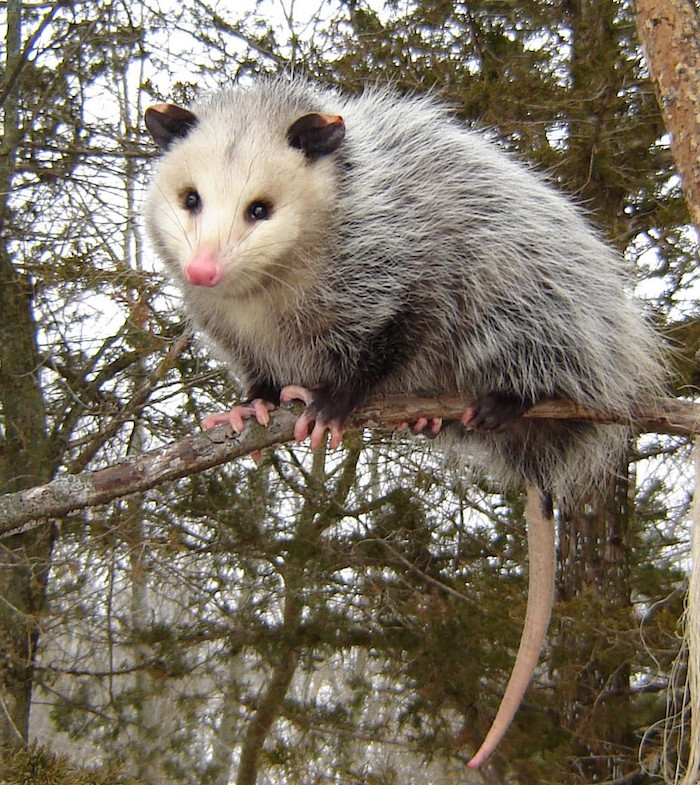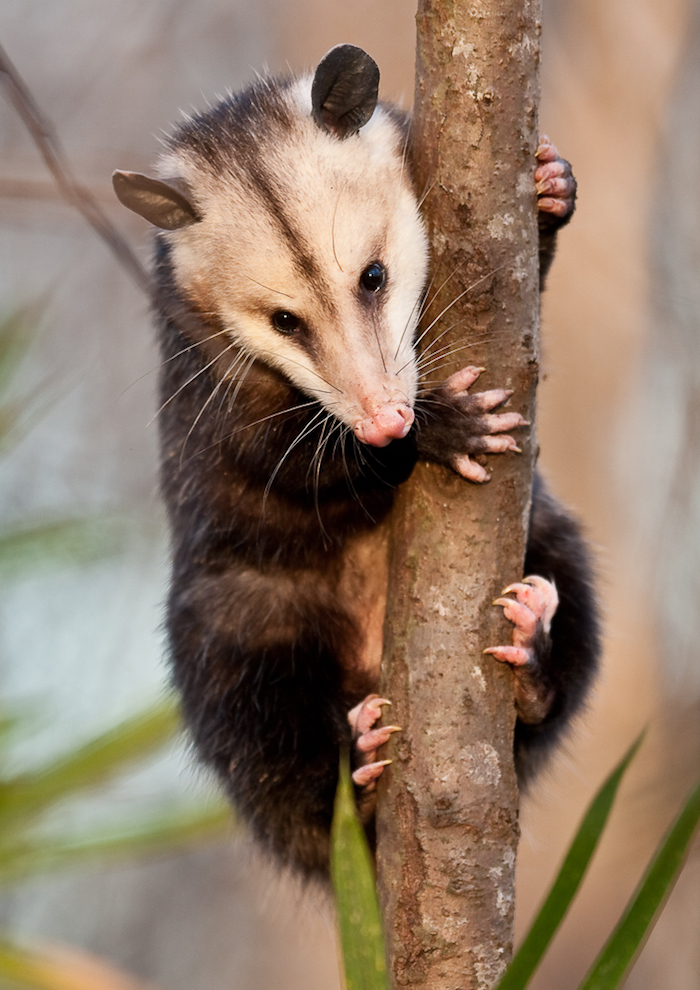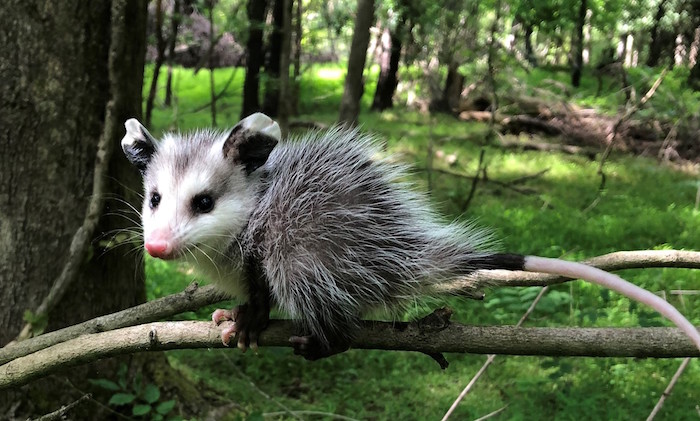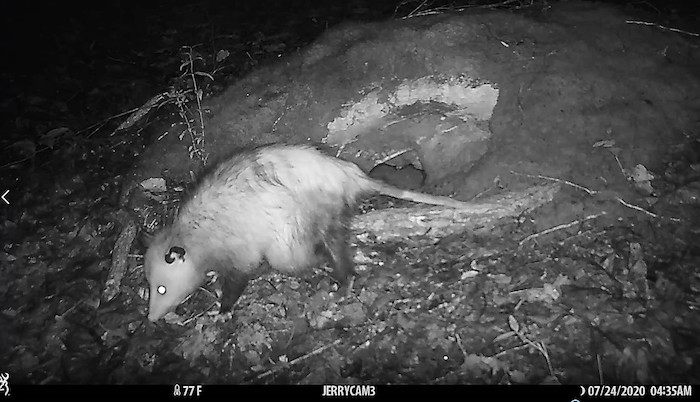Nature Now! Awesome Opossum, Part 1
For immediate release ‐ August 12, 2020
Nature Now
Contact: Jessica Wackes, 919.707.9850. Images available upon request
The Virginia Opossum (Didelphis virginiana) is very common in North Carolina and widely distributed in North America, but most people don’t give the opossum much thought. Most know that it is a marsupial, making it a distant cousin to kangaroos. The Virginia Opossum was even designated as North Carolina’s official state marsupial in 2013. Of course, it had no competition since it is our only native marsupial!
 Virginia Opossum. Photo: NC Wildlife Resources.
Virginia Opossum. Photo: NC Wildlife Resources.
Most people can recognize the opossum, usually with some disparaging reference to its rat-like appearance. The only other thing that most people know about the opossum is that they have difficulty crossing roads. Sadly, for most people, seeing those who didn’t make it across the road is the only interaction they have with the opossum. But the opossum is an awesome animal that deserves much more than just being the subject of bad road-crossing humor.
Marsupials are part of an ancient lineage of mammals that can be traced back to the days of the dinosaurs. Marsupials are a group of pouched mammals that includes kangaroos, Koalas and opossums. The young of marsupials are very small at birth and must crawl to their mom’s pouch (“marsupium”) where they will finish their growth and development until they can go out on their own. There are over 300 species of marsupials in the world, with the majority found in Australia. This is mostly the result of the timing of marsupial evolution and the geologic isolation of Australia. Closer to home, there are about 100 species of marsupials in South and Central America. At some point, an ancestor of the Virginia Opossum moved up into Central and North America from South America. The species adapted to the new environment of these more northern latitudes and continued its expansion.
 Opossum in tree. Photo: Mike Dunn.
Opossum in tree. Photo: Mike Dunn.
The Virginia Opossum is now among the most successful mammals in North America, equally at home in the wilds of our forests and in the wilds of our urban jungles! They have adapted well to living near people and can be found in most metropolitan areas. Their ability to adapt and use a variety of resources for food and shelter is part of the formula for their success. They are omnivores, eating a variety of plants and animals. They reach sexual maturity in less than a year and have a high reproductive output with up to three litters of “joeys” a year. Each litter can have as many as 13 young, only limited by the number of nipples the female opossum has.
They have long prehensile tails and opposable “thumbs” on their lower feet making them great climbers. They can even use their prehensile tail as an extra “hand” to carry stuff. They have a lower body temperature than most mammals making them very resistant to rabies. They have a natural immunity to venomous snake bites and will kill and/or eat such snakes without any ill effect if bitten. They are fastidious groomers and eat the ticks that attach to them. It has been estimated that a single opossum may eat up to 5,000 ticks in a single season. They certainly should be a welcome resident to your backyard if you are concerned about ticks and venomous snakes.
 Juvenile opossum. Photo: Rick Trone.
Juvenile opossum. Photo: Rick Trone.
The only limitations they seem to have are that they do not tolerate the cold as well as other mammals and they have a very short life span of only 1–2 years. They are preyed on by many of our mammalian predators and larger birds of prey. The opossum is not a very fast-moving animal, so it must rely on its stealth to avoid being preyed upon. They don’t have much of a defense against most predators. They do have the most teeth (50) of any North American mammal and are quick to show those off if threatened. But this is more of a bluff as they can’t really mount much of a defense against a large predator. They do feign death as an involuntary response to extreme danger. This behavioral response is the source of the expression, “playing possum.” I’m not sure how good a defense this is, but it must have some survival benefit.
Much can be learned about the Virginia Opossum in various text references and online resources. But these shed little light on the daily life of an opossum. I have been “watching” opossums in the woods behind my house since January of this year. No, I don’t go out at night to watch them with a flashlight since they are mostly nocturnal! I use a trail camera for this window into their lives.
 Secret Life of the Opossum Part Two coming next week!
Secret Life of the Opossum Part Two coming next week!
In the next Nature Now article, I will share what secrets I have learned about the everyday life of the opossum as captured through the lens of a trail camera.
By Jerry Reynolds, Head of Outreach
For more information about our upcoming activities, conservation news and ground-breaking research, follow @NaturalSciences on Instagram, Twitter and Facebook. Join the conversation with #visitNCMNS.

